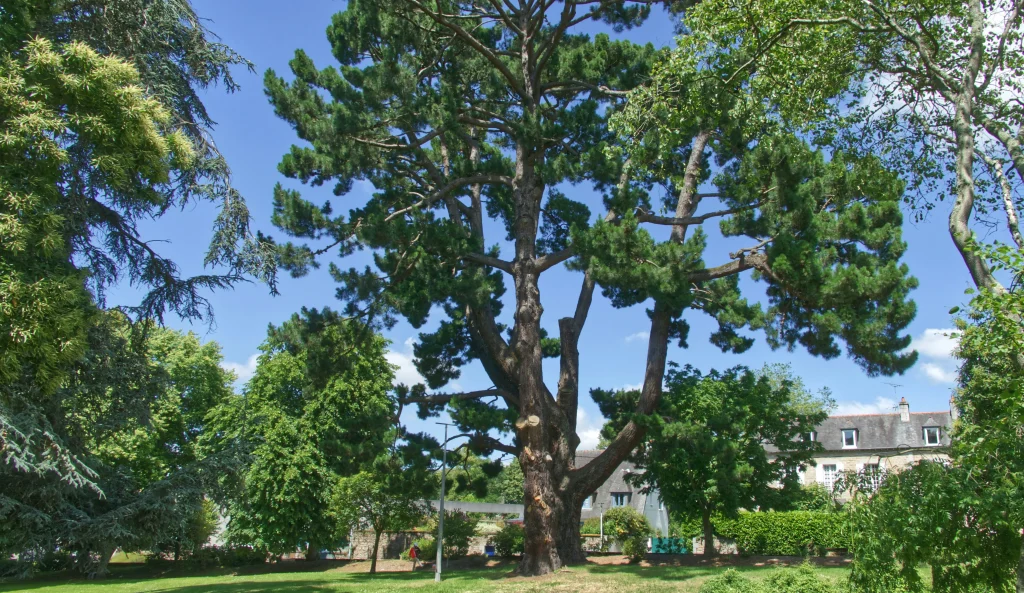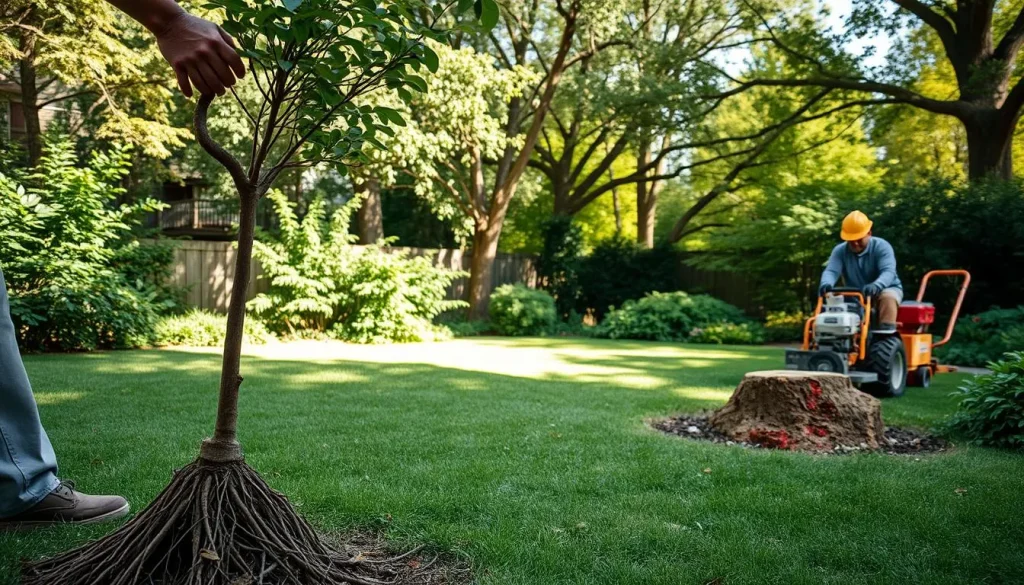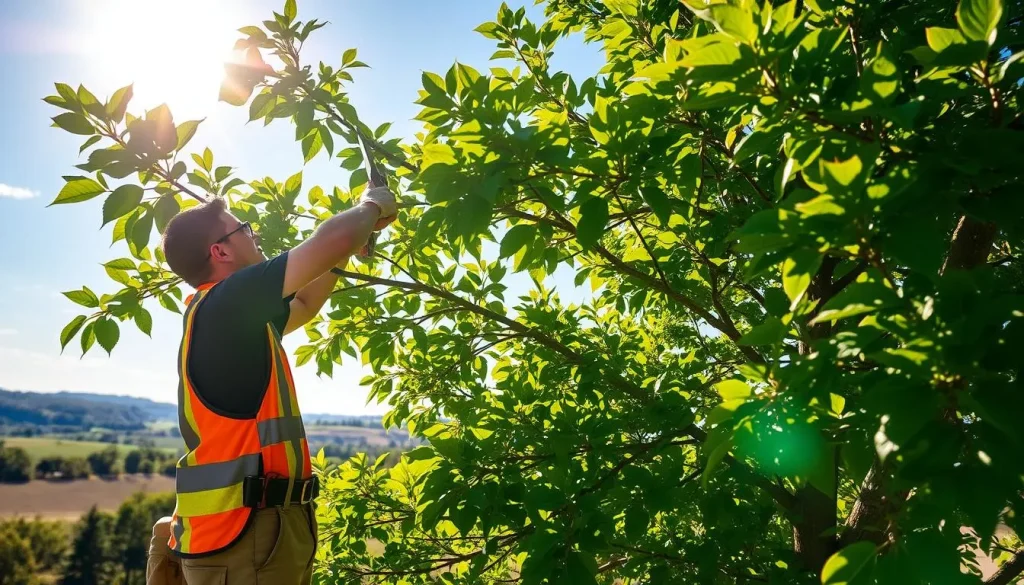
Taking care of big trees needs special skills. You need the right methods. Often you need expert help. Large tree maintenance keeps trees healthy and safe. It protects your money too. Big trees give great benefits. They make shade. They clean the air. They make your home worth more. But big trees also have special problems. Small trees don’t have these same issues. This guide will teach you everything. You will learn about caring for big trees. We will cover check-ups and support systems.
Table of Contents
Understanding the Unique Needs of Large Trees
Big trees face different problems. They need special tree care for large trees methods. Old trees are not like young ones. They have deep roots. They have complex tops. They have years of stress. This changes how you care for them.
Size-Related Maintenance Challenges
Big trees have many size problems. Their huge tops need careful canopy management. This stops branches from breaking. It keeps the tree strong. The great height makes work hard. It can be unsafe. Big root systems spread far. They go past what you can see. They affect nearby buildings. You must think about this during any work.
Age-Related Health Considerations
Old trees get sick more easily. They get bugs more often. They get weak spots. Tree health assessment is very important for big trees. Problems grow slowly over time. You might not see them right away. Regular checks help find issues early. This stops small problems from becoming big dangers.
Essential Large Tree Maintenance Practices
Good large tree maintenance needs several key steps. You should do these steps regularly. This keeps trees healthy and safe. These steps are the base of good tree care.
Regular Health Inspections and Monitoring
Tree safety inspection should happen twice each year. Do this in spring and fall. Look for signs of sickness. Check for strange leaf colors. Look for odd growth. Check for fungus on the trunk or branches. Look for cracks in the trunk. Find hanging or broken branches. Check for root problems. Write down any changes from last time. This helps you track tree health.
Soil Care and Root Zone Management
Big tree roots go far. They often reach as far as the tree is tall. Good soil care means keeping water levels right. Make sure water drains well. Keep the root area safe from heavy things. Don’t put trucks or equipment on the roots. Use barriers during building work near big trees.
Professional Pruning Techniques for Mature Trees
Mature tree pruning needs expert skills. It needs special tools. Big tree tops are complex. Good pruning keeps trees healthy. It makes the tree stronger. It makes things safer.
Structural Pruning Methods
This type of pruning keeps the tree’s natural shape. It removes bad branches. This includes dead wood. It includes sick wood. It includes broken wood. Remove competing leaders. Take weight off heavy branches. Large tree pruning techniques often remove some branches. They don’t cut the whole top. This keeps the tree natural and healthy.
Timing and Frequency Considerations
When you prune matters a lot. It affects tree health. It affects how well trees heal. Most big trees like pruning in winter. This is when they rest. Energy stays in the roots. Some trees have special timing needs. Sometimes you must prune right away for safety. This is true even in the wrong season.
Crown Management Strategies
Good crown care balances many things. You want natural growth. You want safety. You want good looks. Crown cleaning removes dead stuff. Crown thinning lets in light and air. Sometimes you must make the crown smaller. This helps with safety or clearance issues.
Disease Prevention and Health Management
Tree disease prevention is very important for big trees. Their size makes treatment harder. It costs more too. Prevention is always cheaper than fixing problems later.
Common Disease Identification
Big trees get many diseases. They get fungal infections. They get bacterial diseases. They get viral conditions. Finding these early helps a lot. Look for leaf color changes. Watch for early leaf drop. Check for odd growth. Look for bark sores. Find fungus growing on trunks or branches. Regular watching helps catch issues fast.
Preventive Care Strategies
Prevention includes keeping soil good. Make sure water drains well. Don’t damage bark and roots. Use the right plant food. Annual tree maintenance should include soil tests. Add nutrients when needed. Use protective treatments during risky times.
Safety Considerations and Risk Assessment
Big trees create special safety problems. They need careful checking. They need good management. Their size and weight mean failures cause big damage. They can hurt people badly.
Hazard Identification Protocols
Regular safety checks should look at tree strength. They should check the area around trees. Look at buildings. Look at power lines. Look at busy areas. Find signs of inside rot. Look for structural problems. Check root issues. Find stress from weather. Professional tree experts can give detailed risk checks. They use special tools and methods.
Emergency Response Planning
Make plans for emergencies. This includes storm damage. It includes sudden branch breaks. Have phone numbers for emergency tree services. Know your insurance coverage for tree damage. Know when to keep people away from dangerous trees.
When to Call Professional Tree Services
Some large tree maintenance tasks are okay for owners. Many need professional tree services. This is because of safety concerns. It’s also because of technical needs.
Recognizing Professional Service Needs
Call experts for work above 10 feet high. Call for work near power lines. Call for removing big branches. Call for complex pruning choices. Call for disease diagnosis and treatment. Call for installing support systems. If you’re not sure about tree care, ask professionals. This prevents costly mistakes.
Selecting Qualified Arborists
Choose certified tree experts. They need proper insurance. They need equipment. They need experience with big trees. Look for credentials from tree groups. Ask for references from similar jobs. Good professionals will give detailed checks. They give written estimates. They explain recommended treatments.
Cost-Effective Maintenance Strategies
Making a long-term care plan helps manage costs. It makes sure trees get proper care. Tree structural support and prevention often cost less. They’re cheaper than emergency work or replacing trees.
Budget Planning for Tree Care
Big tree care costs vary a lot. Tree size matters. Health conditions matter. Required services matter. Budget for yearly check-ups. Budget for routine pruning every 3-5 years. Budget for possible emergency services. Investing in prevention usually costs less. It’s cheaper than fixing major problems or replacing dead trees.
Maintenance Scheduling and Prioritization
Make a care schedule. Address the most important needs first. Spread costs over time. Put safety issues first. Then focus on health care. Then work on looks. Regular care schedules prevent small issues from becoming big problems.
Conclusion
Good large tree maintenance needs a complete approach. It combines regular watching. It uses prevention care. It uses professional help when needed. Understanding what big trees need helps. Using proper care methods helps. This preserves these valuable trees for many years. Big trees are long-term investments. They need ongoing attention. The benefits make this investment worth it.
You might manage one big tree. You might manage many trees. A systematic approach to care helps. It ensures health, safety, and long life. Ask certified tree experts for complex issues. Ask when you’re not sure about the best action. Contact a professional tree service today. Schedule a complete check of your big trees. Develop a custom care plan. It should meet your specific needs and budget.
How often should large trees be professionally inspected?
Big trees should be checked by experts once each year. Get extra checks after bad storms. Get checks if you notice any changes in tree health or structure.
What’s the average cost of maintaining a large tree?
Yearly care costs usually range from $200-800 per tree. This depends on size, health, and needed services. Emergency services and major structural work can cost much more.
Yearly care costs usually range from $200-800 per tree. This depends on size, health, and needed services. Emergency services and major structural work can cost much more.
Only try to prune branches you can reach safely from the ground. Use proper tools. Any work needing ladders should be left to professional tree experts. Same for work with big branches.
When is the best time to prune large trees?
Most big trees like pruning during rest time. This is late fall through early spring. But timing can vary by tree type. Talk with a tree expert for specific advice.
How do I know if my large tree is diseased?
Warning signs include colored or dropping leaves. Look for odd growth patterns. Check bark problems. Look for fungus growth. Watch for changes in overall tree looks. Professional diagnosis is best for accurate identification.

